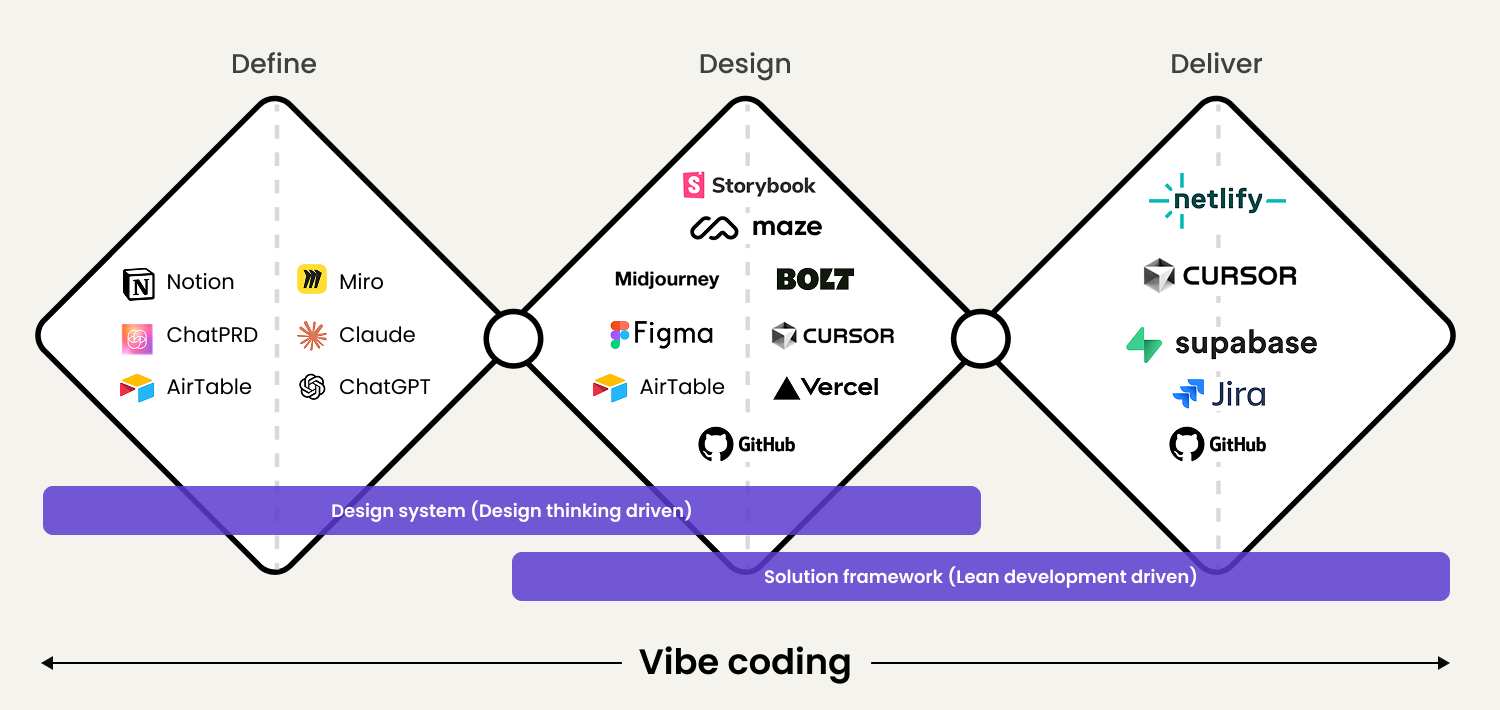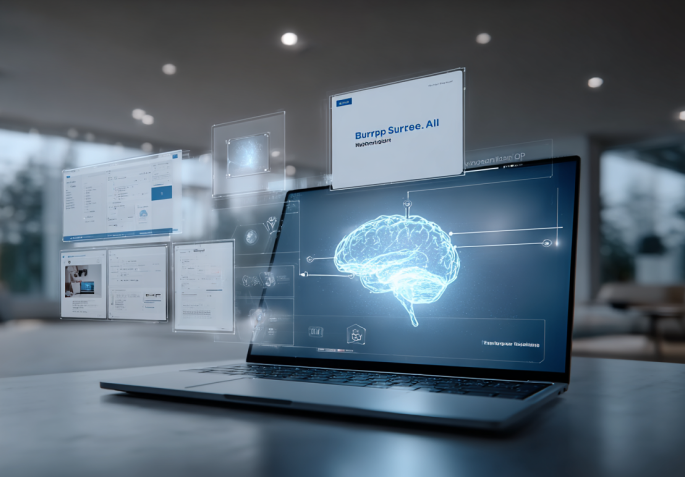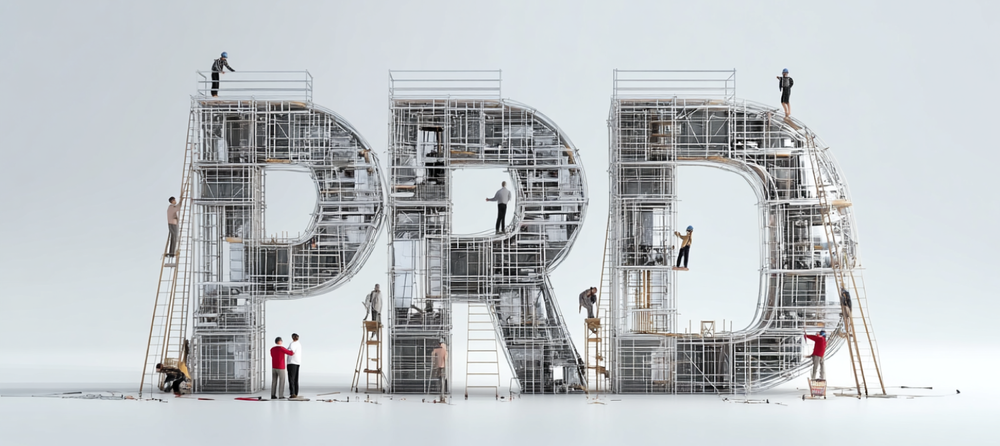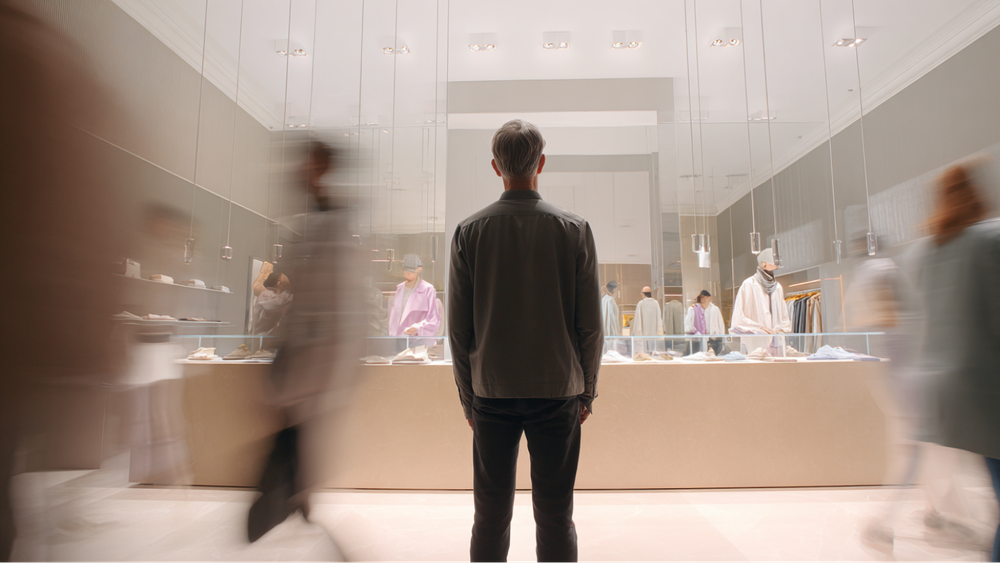What happens to the design profession when AI becomes an integrated part of their toolbox? Has the creative output already become a fusion between human intent and machine capabilities?
These initial questions are foundational questions for design leaders in the AI-first era - a period where artificial intelligence is not merely an addition to the designer teams’ toolbox, but a force reshaping the craft itself. AI challenges how we define creativity, content creation and design authority. It blurs the boundaries between designer, developer and platform capabilities.
"Computing is evolving again. In an AI-First world, we are rethinking all our products and applying machine learning and AI to solve user problems" - Sundar Pichai Google I/O 2017
Pichai’s reflection is more relevant today than ever. We are witnessing the computing industry disrupting itself once again - not just through new interfaces, but through platforms that are learning to evolve autonomously. The platforms we use to design, build and deliver digital experiences are no longer static systems. They now adapt, predict and act co-creatively alongside us, reshaping both creative workflows and organisational structures in real time.
The AI opportunity for designers
We are now entering the third wave of AI - the agentic phase - where systems don’t just understand what users want, but can also act on their behalf. This completely changes the designer's role. Designers no longer design interfaces or flows - they create the intent and context of use and the behaviour schematics for an AI-powered system that learn and adapts over time.

Designers must now think in terms of intelligent workflows - where proactive, data-driven systems use prompts and real-time feedback to shape evolving user experiences. In this new era, design is not only about what users see, but also about how intelligent systems powered with AI behave and collaborate with them.
Vibe coding and AI Prototyping
Vibe coding is redefining how designers work - replacing the traditional Define → Design → Deliver sequence with a continuous, collaborative loop. In this new way of working, design and development merge into one creative system, powered by real-time feedback and AI-assisted production.
AI Prototyping in Practice - AI now supports every stage of the process — from defining insights, to designing interactions, to delivering live systems. The image below illustrates this evolving toolchain, showing how intelligent workflows connect across phases:

Vibe coding introduces a new type of input/output workflow where design intent is expressed directly through code. Instead of creating static mockups, designers describe intent and behaviour - and the AI instantly turns it into a working interface. This turns code into a creative medium rather than a technical handoff. Still, AI-generated code needs curation by developers to be stable for deployment, so developers remain essential to success.
Designers orchestrate, while AI assists - clustering data, generating variations, validating solutions, and automating delivery. Humans bring reasoning, empathy, and narrative, while AI handles scale, logic and orchestration.
This collaboration forms the foundation of AI-assisted design operations, where creativity and computation converge in real time.
Will AI make the Designer role obsolete?
The short answer: no. The AI-first era will not erase the need for designers - it will become more essential than ever. AI will not replace designers. But designers who understand AI will mostly replace those who don’t.
“AI will not replace designers. But designers who understand AI will mostly replace those who don’t.”
Designers' focus has always been on translating human intent into meaningful solutions. Designers are often the voice of the user, ensuring that every interaction - no matter how automated - remains guided by empathy, clarity and purpose. That responsibility doesn’t disappear in an AI-driven world. It expands.



AI capabilities needs to integrated in the Designers processes
As intelligent systems begin to act on behalf of users, designers must take on new forms of authorship and stewardship. The craft evolves - from shaping interfaces to shaping behaviour, from creating artefacts to orchestrating intelligent systems.
Aligning the internal and external perspectives
Adopting an AI-first mindset means learning to view value creation through two interconnected perspectives:
- Internal perspective - the capable organisation: focused on how AI improves operations, collaboration and delivery speed.
- External perspective - the engaged user: focused on how AI enhances customer experiences, trust and outcomes through the customer lifecycle
Most organisations concentrate on one side only - either automating their internal workflows or designing more innovative front-end experiences. The real opportunity emerges when these perspectives are aligned, allowing the same intelligence that powers operational efficiency to also elevate customer experience quality.
Design principles for the AI-first era
As AI becomes embedded in every creative process, design must evolve from shaping static interfaces to orchestrating intelligent systems. The following principles outline how design can remain human-centred while embracing intelligence as a new creative material.
1. Design for more intelligence, fewer interfaces
Shift focus from visual outputs to intelligent behaviours. Design how systems perceive, decide and act over time, not just how they look and feel.
2. Curate, don’t control
Establish boundaries that enable machine creativity to emerge while maintaining human-curated direction. Keep the human in the centre of the loop. Guide AI through intent, ethics and context.
3. Make intelligence transparent
Ensure users understand how AI makes decisions based on their input. Design for clarity, trust and control. Enable handovers to humans when needed.
4. Prototype with real data
Move beyond static mockups. Use live data and real interactions to test how intelligent systems adapt in context, and where the designer can adjust.
5. Design as system intelligence curator
Adopt a curator mindset, managing reusable components and design logic that scale across products and services. Collaborate closely with developers to maintain coherence between design systems, AI models and technical architectures - ensuring every element contributes to a unified, adaptable experience.
6. Design for co-learning
Build feedback loops into your experience. Treat design as a continuous, evolving dialogue between users and AI-powered intelligence. Let your organisation discover how to extend its capabilities through AI and agentic workflows in a visual process, led by design thinking. "How-might-we" sessions can now be used as a tool to let the whole organisation relearn and rethink future solutions.
Adopting your AI Design principles
The AI-first era challenges every designer and design lead to rethink what their craft stands for. As AI becomes integrated into the creative process, our responsibility as designers is to ensure that the systems we shape reflect the same human values that the design guild has always protected - empathy, clarity, purpose and trust.
As AI becomes integrated into the creative process, our responsibility as designers is to ensure that the systems we shape reflect the same human values that the design guild has always protected - empathy, clarity, purpose and trust.
This is not about technology or learning new tools. It is about defining new principles for how designers integrate AI into their workflow. The evolution of the design craft is not a discipline - it’s a dialogue between humans and machines that has just started. Within it is an opportunity to define the guardrails that will guide this relationship - the rules of engagement between creative intent and computational power.
AI will not make design less human-driven.
It will test what it means to be human.
So, as you shape your next project, prototype or platform, I would like you to ask yourself: How will I let AI become part of my design principles - not just in my process?
Are you ready for AI?
I coach leadership teams to build clarity, cohesion and adaptability in an AI-first world — aligning strategy, operations and transformation into one unified system.
Learn more





